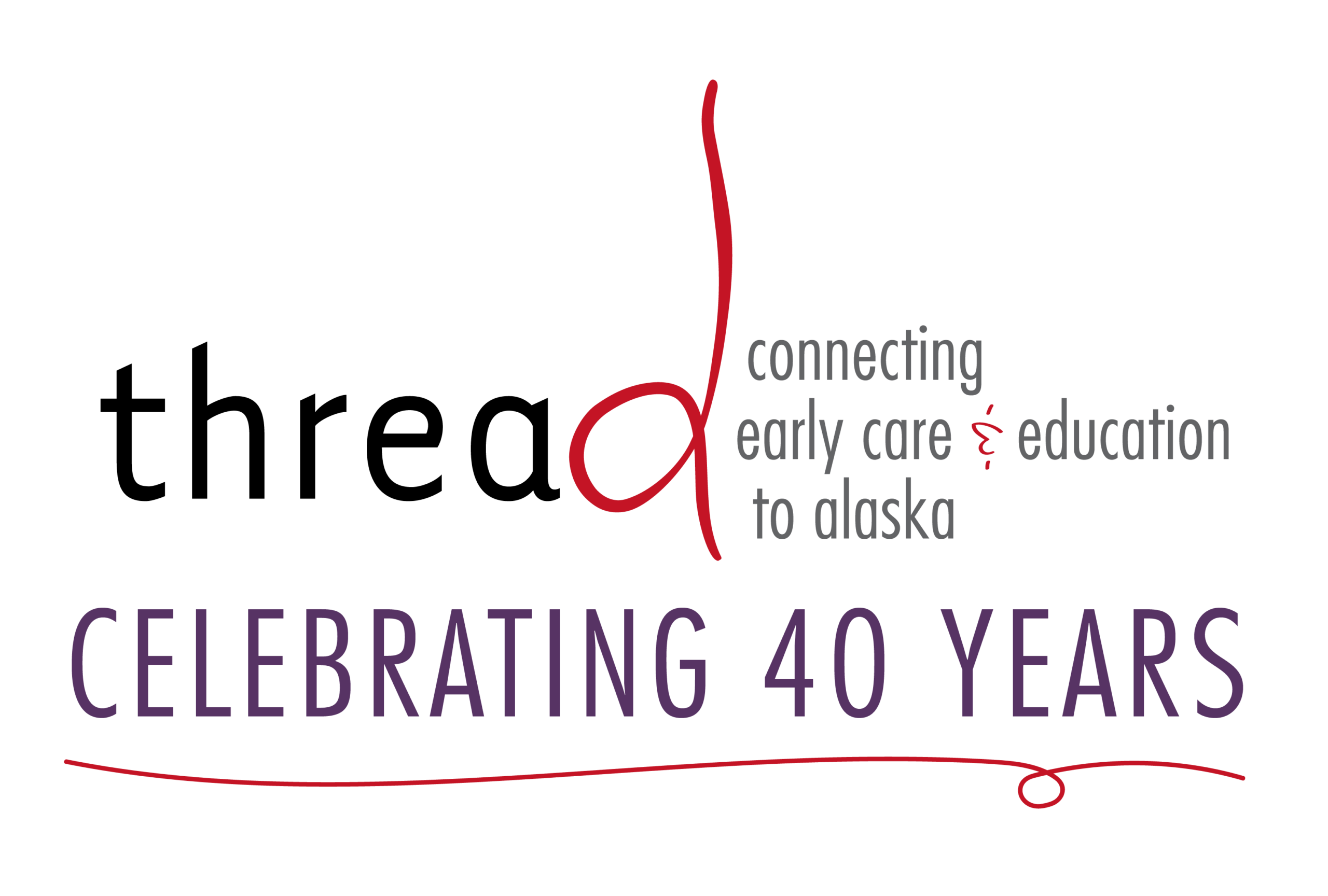Legislative Agenda
thread’s vision is that all early care and learning is accessible, affordable, and high-quality to support positive outcomes for children and families. With this vision in mind, thread believes a combination of diverse policies are needed to stabilize the current child care system and lay the foundation for a stronger child care system moving forward.

ACCESS
Challenge: Alaska does not have enough child care to meet the demand
Goal: Sustainable funding for child care.
Design a funding model that will provide consistent funding to rebuild the child care market, focusing on innovation, partnerships, and quality.
Policy Brief: Sustainable Funding for Child Care in a Mixed-Delivery System
Recommendations
- Allow for braided funding between local, state, and federal sources.
- Encourage public-private partnerships with communities and businesses.
Impact – A higher quality of life for Alaska’s families &
communities
QUALITY
Challenge: Early education has a low skilled, underpaid workforce
Goal: Increase support for child care workforce
Establish wages and benefits for all early educators based on their education and level of experience to retain the workforce.
Policy Brief: Increase Support for Child Care Workforce
Recommendations
- Wage/benefit parity with comparable education background; grants for start-up/capacity that include funding for higher wages.
- Connect Learn & Grow (QRIS)/Alaska SEED participation to wage/benefit bonuses by reinstating the Alaska ROOTS (Retaining Our Outstanding Teachers) award.
Impact – Child care workforce is retained and
respected; young children receive continuity of
care


AFFORDABILTY
Challenge: Alaska’s child care costs exceed the cost of college
Goal: Decrease out-of-pocket child care costs
Reduce the out-of-pocket child care expenses for all Alaskans. Child care should cost no more than 7% of annual income.
Policy Brief: Decrease Out-of-Pocket Child Care Costs
Recommendations
- Support innovative capacity building through the co-location of child care businesses within housing developments, workplaces, and educational institutions to reduce costs.
- Use cost of care rather than market rate survey.
Impact – Increased well being of children and families; decreased reliance on public assistance
QUALITY, ACCESS
Challenge: Alaska needs a stable child care system with multiple options for families.
Goal: Mixed-delivery, high-quality child care system
Ensure future policies and programs support mixed-delivery and continued alignment of all early childhood programs to prepare young children for school and life.
Policy Brief: Providing Pre-K in a Mixed-Delivery System
Recommendations
- Sharing publicly funded Pre-K teachers across both school-based and community-based child care programs.
- Learn and Grow standards should be adopted as the high-quality standards framework for all early childhood programs.
Impact – Parent Choice, Continuity of Care & Strong Businesses


